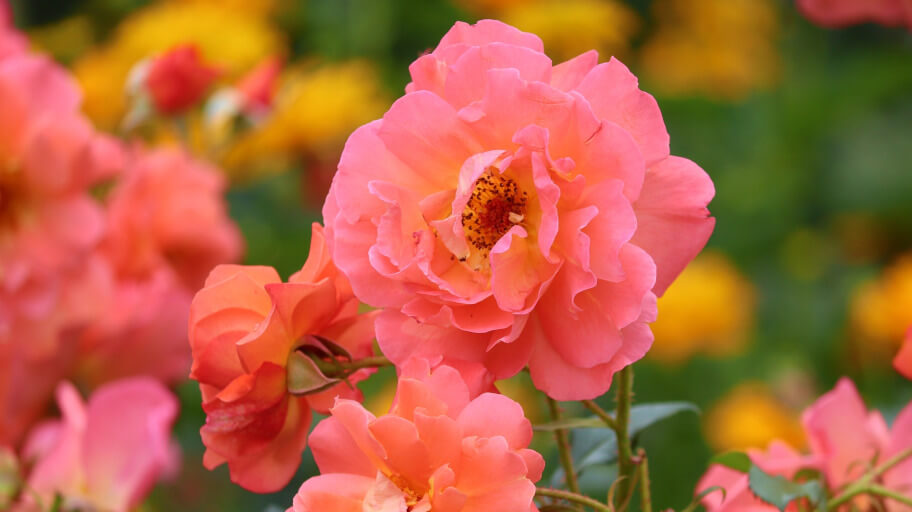
Winter is just over the horizon and will be here before we know it. Australia is blessed with relatively mild winters, but it is none the less essential to make some basic preparations early. We can carry out any and all garden maintenance tasks for you, but for those of you who like to keep their hands close to the soil, we’ve made an autumn gardening checklist to follow.
How to maintain your garden in autumn:
Clean up
First things first. Clearing your garden of dead plants and debris is not only a way to deter pests from overwintering in it, but also a good way to gather composting materials this autumn.
- Get rid of dead annual plants – Start by removing all annual plants that have perished or are unwanted and throw them in the compost heap.
- Tidy the borders of your garden and prune – Check the edges of your garden for plants, branches or stalks that should be removed. Some close by trees may need pruning for growth improvement, so if you know how, you can do it yourself or pass this task on to a specialist instead.
- Rake all the leaves in your yard – You can either just throw them straight into the composter or keep them separate to make leaf mould which adds rich organic matter to the soil. (More details on how to do your own organic mulch you can check below).
- Pay attention to the greenhouse – If you have a greenhouse, then you can be sure that’s prime real estate for insects looking for a place to overwinter. That is why you should thoroughly disinfect it before autumn is halved. Take care of the paths, shelving, and inside of the glass. Leave it open for a few days or as long as it takes for it to be completely dried. Don’t forget to take care of the greenhouse gutters as they can get clogged and prevent water drainage from the roof.
- Ponds need cares, too – All ponds should be cleaned of any debris and leaves since they can clog up filters or pumps. Additionally, decomposing leaves in the water can turn it foul. You can save effort by stretching a fine net over the pond.
Compost
Autumn is the perfect time to spread your stored compost to keep your garden fed throughout the winter. If it isn’t ready you should turn the pile to aerate it thus speeding up the process. This is why usually it’s a good idea to have 3 compost bins. One for freshly started compost, one with maturing compost, and one with compost that is ready for use. What qualified as compost material and how to compost you can learn from our compost guide for beginners.
Consider also using a spring tined rake to clean any thatch and moss from your lawn. That’s just more material for the composter! Additionally, cutting the grass lower than usual right before winter will help the soil dry quicker in spring and provide extra sunlight. You can get more useful tips from our Autumn lawn care guide.
Mulch
Mulching can keep your overwintering plants from freezing and is downright essential for plants that have exposed roots. You can use the thatch you’ve gathered from your lawn or just buy dry organic material.
If you want to try and make your own mulch, then here is how to do it:
- Collect fallen leaves and make a pile.
- Go over them with a lawnmower to cut them into small pieces.
- You can sprinkle the material right away over the soil.
- It is possible also to store some extra for later by using bags with poked holes in them for letting the air in.
It’s a pretty simple process and in the end, you are left with a wonderful organic mulch to enrich your soil.
Plant
Autumn is actually the perfect time to make rearrangements in your garden, because of the still warm soil. Go over the beds and think about moving plants that were previously poorly positioned.
Prepare the soil of your garden beds for next years planting or the bulbs you are about to plant in autumn by tilling it. After you’ve cleaned up the beds, tidied up the borders and tilled the soil. A good idea is to lay a generous layer of compost or well-aged manure over it.
Warm soil and cooler air are also the perfect conditions for putting down evergreens, so if you wanted to introduce them in your garden – Now is the perfect time!
There are also some decorative species, the bulbs of which can be planted before winter or you can even start your very own autumn vegetable garden with the kids. Some plants to consider are daffodils, freesia, heath, gum tree, etc. As for vegetable planting, you can try cabbage, spinach, radishes.
Protect gentler plants
If you have any gentle potted plants outside, you should naturally find them a warmer spot for the winter. Some species of plants will need more than mulch to protect them from the lower temperatures. Plants that have rhizomes/tubers/bulbs can be lifted and stored to be replanted in spring. Cut back their stalks and bury them in trays of dry sand with just the top visible.
Take care of tools and watering equipment
Hoses and drip-feed irrigation should have no water inside of them and be stored in a dry spot. Send your lawnmower for maintenance before putting it away, sharpen shears and cutting tools, and give your shovels a good wash. It’s always worth coating your tools with anti-rust agents when they are about to sit for extended periods of time. All of this will give you a leg up when starting in spring.
Rely on professionals for the autumn gardening task!
Fantastic Gardeners is at your services!








